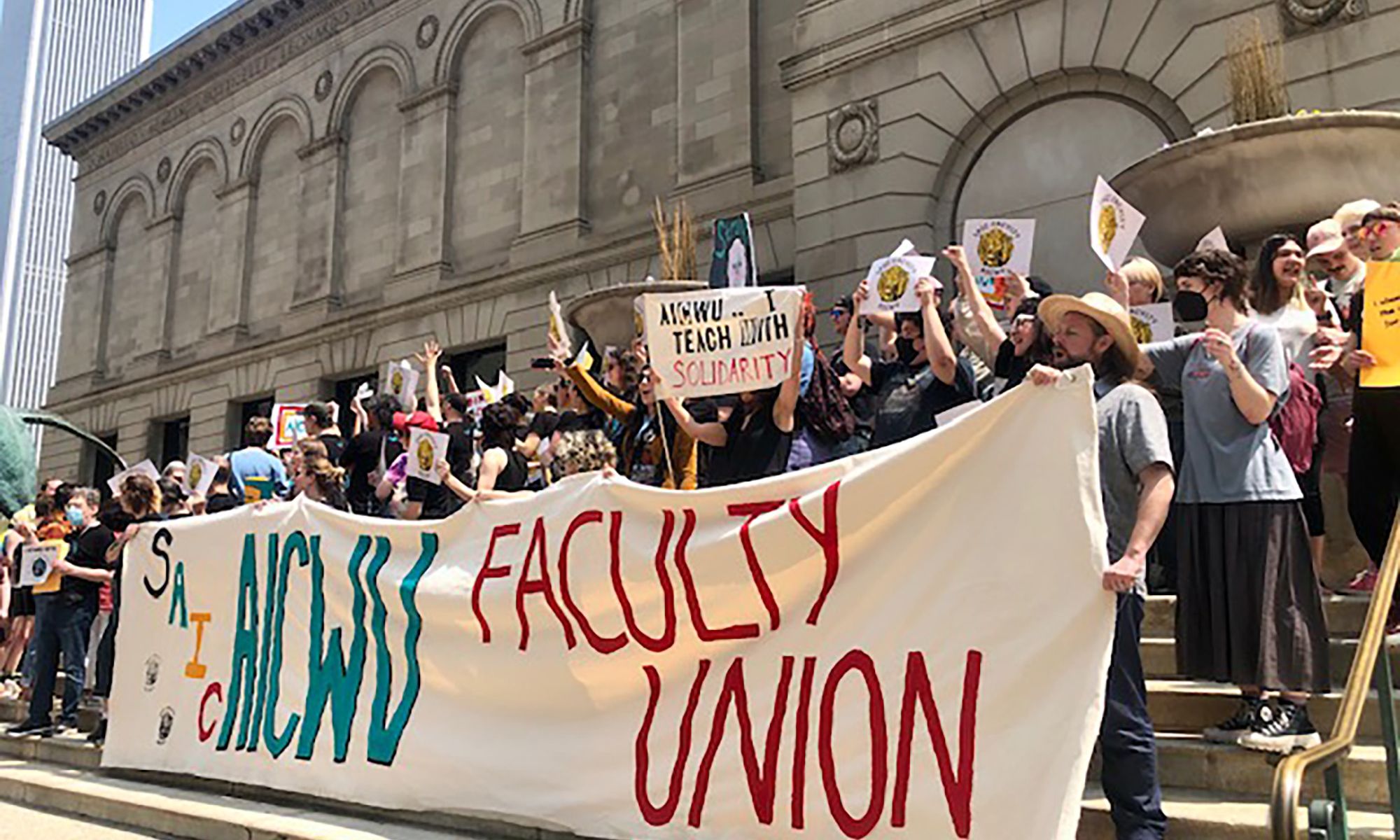The May 10 rally in favour of the non-tenured faculty union at the School of the Art Institute of Chicago Photo courtesy AICWU/AFSCME
Adjunct and lecturer faculty at the School of the Art Institute of Chicago (SAIC), one of the top art schools in the US, revealed their intention to form a union in an open letter posted on their website on 10 May. The letter was signed by close to 200 people. Non-tenured staff make up about three quarters of SAIC's faculty across multiple departments.
“Our intent is to build a wall-to-wall union representing the workers that have long done the heavy lifting—often invisible, unregulated and under-compensated—to secure this institution’s world-class reputation. Our working conditions are intolerable,” the letter states in part. “We write in protest of a two-tier system of compensation and benefits that is creating a permanent underclass of contingent faculty.”
In tandem with the announcement, faculty, staff and students held a rally on 10 May at the school’s campus that drew around 200 people.
The non-tenured faculty’s efforts to form a union comes just four months after staff at SAIC and the Art Institute of Chicago (AIC) became the first workers at a major Chicago art institution to vote in favour of forming a union. If the latest effort is successful, the non-tenured faculty union at SAIC would be part of the Art Institute of Chicago Workers United (AICWU), and the American Federation of State, County and Municipal Employees (AFSCME) Council and up to 600 people could be part of the bargaining unit.
The May 10 rally in favour of the non-tenured faculty union at the School of the Art Institute of Chicago Photo courtesy AICWU/AFSCME
Issues that prompted non-tenured faculty to organise include a lack of access to benefits and frustrations over salaries, wages and a lack of opportunities for growth. There have been previous efforts at SAIC among non-tenured faculty to organise, but they were unsuccessful.
“It was a culmination of a bunch of years of frustration and it was like a cathartic moment for a lot of SAIC people,” says Luna Jaskowiak, a lecturer within the liberal arts department at SAIC and member of the faculty AICWU organising committee. “One of the things the SAIC administration likes to say is, ‘We want to work with you directly,’ or, ‘We want to work with you individually,’ or, ‘Just come to us with whatever your problems are.’ And the issue that I have with this is, ‘Okay, but that kind of communicative action only works if you're coming at this conversation as equals.’ The problem is that there's so much of a disparity between a normal lecturer or adjunct and even just the head of the department, much less the high-level administrators.”
Unionising efforts at the museum and school have previously been met with some resistance. In January of this year, the school staff and museum workers’ union votes were overseen by the National Labor Relations Board. The results in both votes were overwhelmingly in favour of unionising, and both groups formed AICWU under AFSCME.
“We’re aware that part-time faculty are in conversation with AFSCME Local 31 to form a union,” an SAIC spokesperson says. “If a union is voted in, the school will work with the bargaining team on matters relating to pay, benefits, appointment terms and other working conditions.”
Efforts by SAIC's non-tenure faculty to form a union come amid a nationwide surge in interest in organised labour in the arts field and beyond. Workers at countless museums and art schools have sought to form unions in recent years; and in the last few months workers at Starbucks, Amazon and other multinationals have formed some of those companies’ first unions.

